Adopting New Technology
- Tommy Wald

- Oct 19, 2023
- 4 min read
Embrace the future.
Have you noticed all the new technology that has popped up across your industry and others? I’m certain you have as adopting new technology has become a best practice for many businesses today. Mostly because it offers a competitive advantage by improving productivity, enhancing customer satisfaction and increasing sales revenue.
Whether you're running a medical practice, law firm, restaurant, or consulting firm, embracing new technology can be a game-changer for your business.

For example, I have a dental client specializing in oral facial surgery. The owner is always evaluating new technology to improve the patient experience, such as facial scanners, AI designed implants, teeth alignment tech, and more. This helps him grow his practice and become a leader in oral facial surgery.
In this blog, I’ll be discussing the strategies and benefits of adopting new technology as a business owner, and what to consider when doing so.
1. Recognizing the Need for Change
The first step in adopting new technology is recognizing the need for change. Business owners should stay attuned to industry trends, customer preferences, and emerging technologies. This awareness helps identify opportunities for improvement and innovation within the business.
2. Setting Clear Objectives
Before diving headfirst into technology adoption, it's essential to set clear objectives. What specific goals are you looking to achieve? Are you aiming to enhance customer engagement, streamline operations, or improve data security? Having a well-defined purpose will guide your technology choices and ensure that the investments align with your business's needs.
3. Conducting Research
Once you've identified your goals, research is key. Business owners can explore various options, including software, hardware, and cloud-based services, to find the best fit. Seek recommendations from industry peers, attend tech conferences, or consult with IT professionals to gain insights into the latest solutions available.
4. Budgeting and ROI Assessment
Adopting new technology can be an investment, so it's crucial to budget accordingly. Calculate the costs associated with purchasing, implementing, and maintaining the technology. Be sure to consider the return on investment (ROI). How will this technology benefit your business in terms of increased revenue, reduced costs, or improved customer satisfaction?

Using the same dental oral facial surgeon as an example, if a new dental technology solution costs $20,000 to procure and implement, how many new patients will he need to attract over time to justify the capital expenditure? Or, how much more productive will his staff be to justify the same?
5. Employee Training
Technology adoption often involves a learning curve for employees. Providing proper training and support is vital to ensure that your team can effectively utilize the new tools. Employees buy-in is also essential; explaining how the technology will make their jobs easier or improve their work can encourage a smoother transition.
6. Start Small and Scale
Small business owners can start by implementing technology on a small scale and gradually expanding as they become more comfortable and confident. This incremental approach minimizes risk and allows you to learn from initial experiences.
7. Customer-Centric Approach
Consider how the new technology will benefit your customers. Whether it's enhancing the online shopping experience, offering better customer support, or providing a more personalized service, your technology choices should align with your customers' needs and expectations.
8. Data Security and Compliance
When adopting technology, particularly if it involves handling customer data, prioritize security and compliance. Ensure that your systems and practices meet all relevant data protection regulations, such as GDPR or HIPAA, to maintain trust and protect your business from legal issues. All this new technology attaches to the network and requires additional IT resources to support.
9. Continuous Evaluation and Adaptation
The world of technology is ever evolving. Small business owners should regularly evaluate the performance and impact of the technology they've adopted. If something isn't working as expected or new opportunities arise, be prepared to adapt and make necessary changes.
10. Collaboration and Networking
Consider joining local business associations or online communities where you can learn from other small business owners about their technology adoption experiences. Sharing insights and best practices can help you stay ahead in the technology game.
In conclusion, business owners who embrace new technology have the potential to gain a competitive edge, improve efficiency, and provide a better customer experience. By recognizing the need for change, setting clear objectives, conducting thorough research, and taking a customer-centric approach, small businesses can successfully navigate the ever-changing tech landscape.
Remember, technology adoption is not a one-time event; it's an ongoing journey of innovation and improvement that can lead to long-term success.
* * * * * *
Understanding how your business can adopt new technology is key to maintaining a competitive advantage.
RIATA can help you assess and determine the best approach for adopting any new technology you are considering for your business. Contact RIATA and we’ll gladly discuss and help you develop a plan to implement.
About the Author: Tommy Wald is CEO of RIATA Technologies, a Managed IT Services Provider headquartered in Austin, TX. He can be reached at TWald@RiataTechnologies.com.





Comments